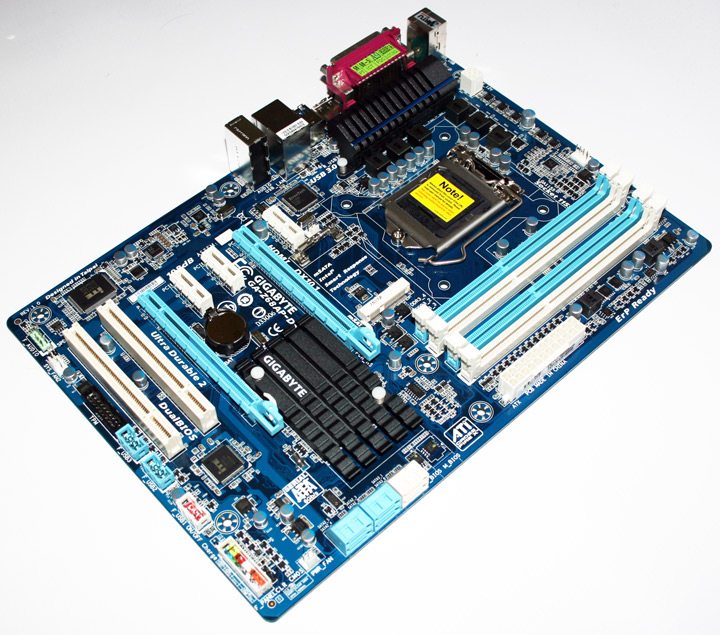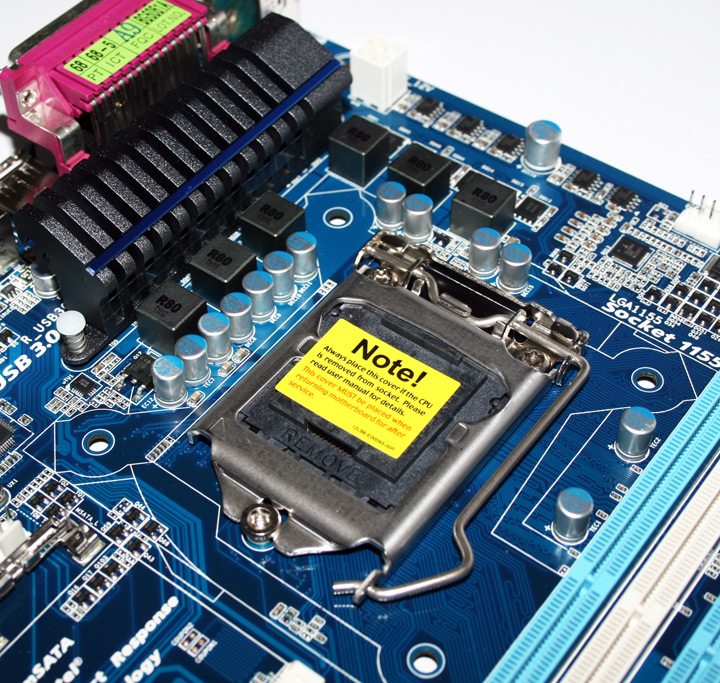Gigabyte Z68AP-D3 Z68 Motherboard Review
Andy Ruffell / 13 years ago
Moving onto the board, we can see that even though Gigabyte are now using their black colour scheme for boards, this one continues to use a blue theme as we’d expect with the budget range of boards. The slots are blue and white and the board is very open plan with not a lot of cooling.

Speaking of cooling, around the socket we only find a single passive heatsink over the MOSFETS. Other than this the CPU socket has a few components scattered around the top and left hand side but is fairly sparse to allow the best cooling to the processor, and so that larger CPU coolers can be used. CPU support includes 2nd generation socket 1155 based Intel Core i3, i5 and i7 processors.

We find four memory slots on the board working in dual channel mode (2 blue and 2 white). These slots support up to 32GB of DDR3 2133/1866/1600/1333/1066MHz memory and also supports XMP memory modules for the best compatibility.

To cut down the pricing, Gigabyte have had a play with the expansion slots on this card. We find two PCI-Express x1 slots, two legacy PCI slots and what looks to be two PCI-Express x16 slots, though only the first runs at x16 speeds, whilst the second runs at x4 speeds. Upon a closer inspection, it seems that the x4 slot shares its bandwidth with the second and third PCI-Express x1 slots, meaning that if they are in use, the x4 slot will also drop down to x1 speeds, though we can’t see this happening very often due to the lack of x1 based cards on the market. If you’re thinking about running a dual GPU configuration, we can only suggest using a more powerful single card or looking at other options depending on your configuration.

Towards the bottom of the board we find some of the usual suspects including a front panel audio header, a system fan connector, TPM connector, three USB 2.0 headers which one allows for Gigabyte’s patented On/Off charge feature and the typical front panel LED and button headers. Among the system fan header, the board has another three headers placed strategically around the board.

There are 6 SATA ports in total, of which four are blue and support SATA 3Gbps, whilst the two white ports support SATA 6Gbps. All SATA connectors include support for RAID 0, 1, 5 and RAID 10.

Not ending the storage possibilities at that, we also find another SATA connector towards the middle of the board. This time however, it’s a mSATA port of which drives can be bought but are still quite pricey and mostly made by the likes of OCZ when looking at the way the channel market is moving.

Taking a look at the I/O panel, we feel like we’ve been slightly knocked back in time with the appearance of both a parallel and serial port. We also find a PS/2 keyboard/mouse combo port, four USB 2.0 ports, optical SPDIF, HDMI, two USB 3.0 ports, Gigabit LAN courtesy of the Realtek RTL8111E chip and three audio jacks which rely on the Realtek audio codec.




















